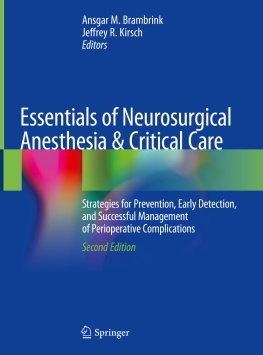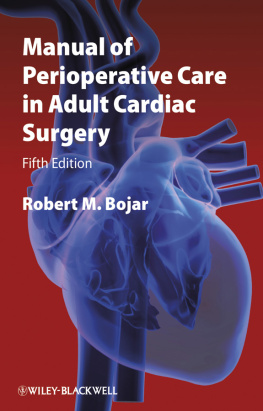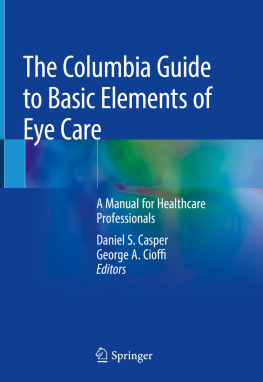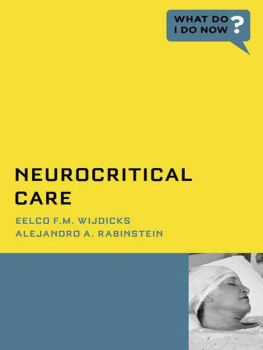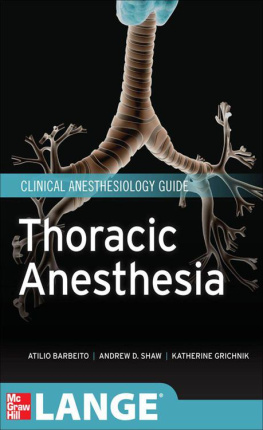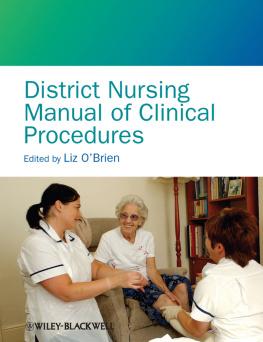Editors
Ansgar M. Brambrink and Jeffrey R. Kirsch
Essentials of Neurosurgical Anesthesia & Critical Care
Strategies for Prevention, Early Detection, and Successful Management of Perioperative Complications
2nd ed. 2020
Editors
Ansgar M. Brambrink
Department of Anesthesiology, Columbia University Medical Center, New York, NY, USA
Jeffrey R. Kirsch
Department of Anesthesiology, Oregon Health & Science University, Portland, OR, USA
ISBN 978-3-030-17408-8 e-ISBN 978-3-030-17410-1
https://doi.org/10.1007/978-3-030-17410-1
Springer Nature Switzerland AG 2020
This work is subject to copyright. All rights are reserved by the Publisher, whether the whole or part of the material is concerned, specifically the rights of translation, reprinting, reuse of illustrations, recitation, broadcasting, reproduction on microfilms or in any other physical way, and transmission or information storage and retrieval, electronic adaptation, computer software, or by similar or dissimilar methodology now known or hereafter developed.
The use of general descriptive names, registered names, trademarks, service marks, etc. in this publication does not imply, even in the absence of a specific statement, that such names are exempt from the relevant protective laws and regulations and therefore free for general use.
The publisher, the authors, and the editors are safe to assume that the advice and information in this book are believed to be true and accurate at the date of publication. Neither the publisher nor the authors or the editors give a warranty, expressed or implied, with respect to the material contained herein or for any errors or omissions that may have been made. The publisher remains neutral with regard to jurisdictional claims in published maps and institutional affiliations.
This Springer imprint is published by the registered company Springer Nature Switzerland AG
The registered company address is: Gewerbestrasse 11, 6330 Cham, Switzerland
To our life mentors:
Dr. Nelly Tsouyopoulos, Dr. Donna Stark, Dr. Jeffrey R. Kirsch, and Dr. John W. Olney. Above all else, to my wife, Petra Brambrink, who has supported and challenged me since we first met (AMB)
Dr. Louis G. DAlecy, Dr. Richard J. Traystman, and my loving and tolerant wife, Robin (JRK)
Thank you
Foreword
The great success of the first edition of this book, Essentials of Neurosurgical Anesthesia & Critical Care , encouraged the editors, the authors, and the publisher to publish this second edition. It appeals to a wide variety of readers, including anesthesiologists, intensivists, neurosurgeons, neurologists, physician assistants, perioperative/advanced practice nurses, trainees, or even colleagues, interested in the neuro field. The essentials of neuroanesthesia and critical care are presented in a concise manner, guiding the reader from anatomical/pathophysiological backgrounds to scientific-based anesthetic treatment. It considers many special aspects of individual care, covering a wide variety of problems which may occur in patients with or without comorbidities over the whole perioperative period.
To my knowledge, there no other book on the market which in 100 chapters covers almost all aspects pertinent to modern neuroanesthesia and neuro-critical care. The editors are to be commended on gathering worldwide renowned experts as authors to present the state of the art for understanding neurosurgical/neurological diseases and their respective anesthetic/intensive care treatments of standard and complex neuro patients. For this second edition, each chapter has been rigorously updated with nine more chapters added. In addition, the problem-oriented approach helps the daily practitioner to understand not only the development of a patients condition during the course of treatment, but also the acutely changing situation of the patients, which may need a precise intervention, to ensure optimized treatment and recovery. All of this can be achieved only by a multidisciplinary approach which is reflected by the authors from different disciplines.
The new edition of Essentials of Neurosurgical Anesthesia and Critical Care closes the gap between classical textbooks and other available sources on neuroanesthesia/neuro-critical care and the need for a scientific-based reference guide with a focus on a day-to-day clinical practice.
Eberhard Kochs
Preface
Today, treatment decisions are expected to be evidence-based, and the pursuit of excellence in clinical practice is an essential element for achieving success in the current healthcare environment.
Perioperative care of patients with central nervous system diseases is evolving rapidly as increasing numbers of operative interventional techniques and strategies are developed. Physicians, nurses, nurse practitioners, and physician assistants treat patients throughout the immediate perioperative period, including during diagnostic procedures and interventional radiology procedures, and frequently participate in critical care treatment for this patient population.
We believe that the broad spectrum of neuroanesthesiology and neurocritical care providers should have a clear understanding of (1) the disease process including pathophysiology, specific diagnostics, and treatment options, (2) the concepts and relevant details of the available neurosurgical interventions and techniques, and (3) the means necessary to provide safe and comfortable anesthesia and perioperative care for these patients.
This book, Essentials of Neurosurgical Anesthesia & Critical Care , is intended to serve as a quick reference guide for those involved in the perioperative care of neurosurgical patients. It is not meant to substitute for a full-length textbook in this field.
As a guide, this book focuses on day-to-day clinical practice and supports the first-line healthcare provider by anticipating problems and complications in neurosurgical anesthesia and critical care, and by suggesting solutions and appropriate management. All chapters are dedicated to a single area of concern and are designed to walk the reader from the problem to the solution, using a structured, algorithmic approach. In addition, each chapter summarizes key knowledge for the practitioner in the field as necessary, and tables and illustrations are included for quick and easy reference. At the end of each chapter, the most important elements are highlighted, and references for further reading are provided.
Our book is conceived and edited out of the strong belief that perioperative medicine is a true multi-specialty discipline and that patient care is best delivered with a genuine collaborative approach. Therefore, we hope that it will be useful for all healthcare providers involved in the perioperative treatment of neurosurgical patients, including trainees in anesthesiology and neurosurgical critical care as well as faculty members in both fields, physician assistants, nurse practitioners, nurse anesthetists, and perioperative nurses.
We believe the reference guide format is best because it allows the clinician to have immediate access to solutions to problems in the operating room, post-anesthesia care unit, intensive care unit, or wherever they may occur. Even if the practitioner has the best text on the office shelf, it is not helpful when acute problems occur at the bedside. This book, however, will be portable to every place of practice and will make it easy for the practitioner to identify or quickly review several good solutions for a given problem at any time.

